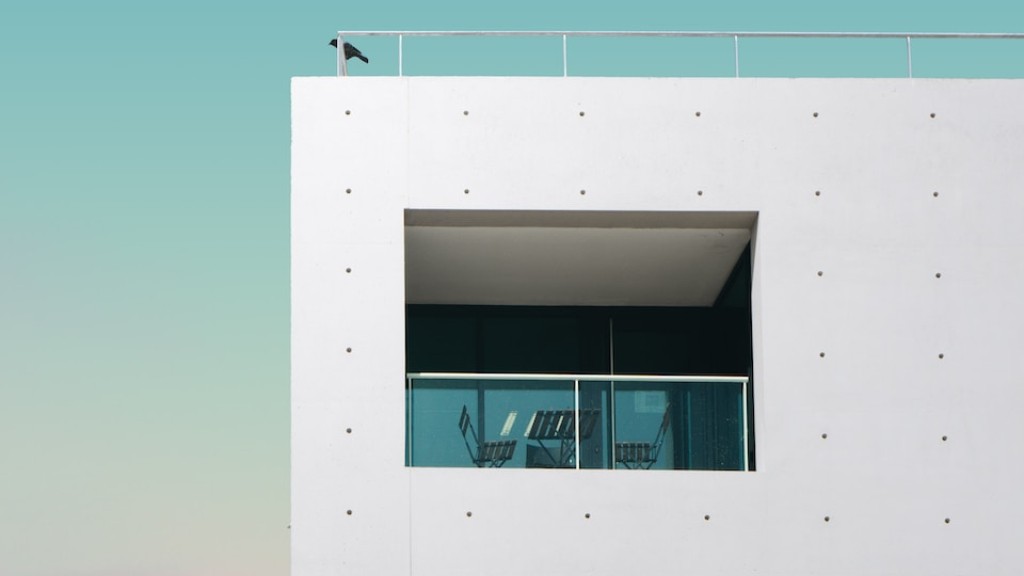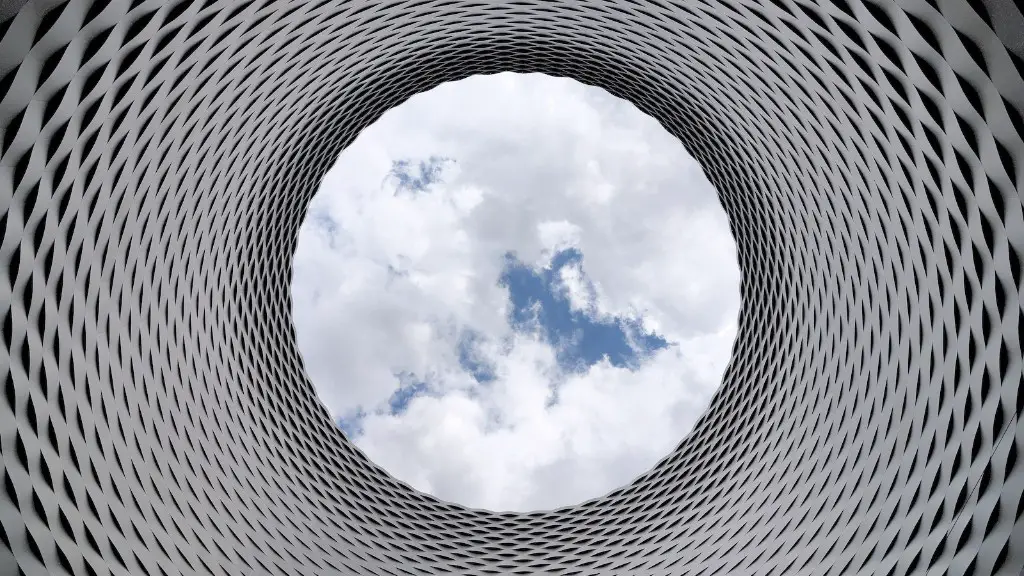As economies expand and contract, it has a profound impact on the design of architecture and how it is planned and developed. Many aspects of the building process, including the materials used and the length of time taken to erect a structure, are influenced by economy. This essay will explore how the present economy affects architecture, as well as its implications for the future of the field.
From a practical perspective, one of the most immediate noticeable effects of the economy on architecture is the prices available for construction materials. During boom times, infrastructure projects such as bridges, roads and skyscrapers are in huge demand and the cost the materials required to build them can skyrocket. As economic activity decreases, the cost of many construction materials decreases as well, which can allow for cheaper building projects to take place.
Another economic factor that has a direct impact on architecture is the availability of capital for funding projects. When there is an economic boom, a great deal of money can be available for architectural projects and developers can often have easy access to financing from banks and other investor sources. Conversely, during an economic downturn, funding can be much harder to acquire and the cost of investment can be higher.
In addition to the direct implications that the economy has on architecture, there is also a more subtle impact on the aesthetic choices of the designs. During times of economic prosperity, there is a tendency for architects to design more lavish, elaborate structures that utilize more expensive materials and design elements. Conversely, during a recession, architects often focus more on practicality and simplicity in their designs, as they must work within the restrictions of a tighter budget.
The economy also has an impact on the use of green and sustainable design principles in architecture. During times of economic growth, the cost of green building materials is often something that is not given significant consideration in the design process. During economic downturns, however, the cost of green materials can become a key factor in the decision-making process, which can result in more sustainable buildings.
Finally, the economic environment can also have an impact on the quality of architecture. During periods of economic growth, there can be an abundance of money available for projects and this can lead to higher standards of workmanship and excellence in design. During recessions, however, money can be tight and this can lead to a decrease in the quality of buildings erected.
Government Regulations
The economy also affects architecture through the various regulations imposed on the industry by the government. When the economy is experiencing difficult times, the government may be more likely to impose legislation with the intention of limiting potential financial losses. This can have implications for the architecture field, as restrictions on the use of certain materials may be imposed and other building practices may be regulated.
In some cases, the government may also impose taxes on specific materials or services related to architecture, which can have a considerable effect on costs. For example, in the United Kingdom, VAT taxes on some building materials and services can range from 5-20%. This can have a considerable effect on the profitability of an architectural project and can lead to the decision to use cheaper materials and simpler designs.
Finally, governments can also incentivize certain types of architecture during times of economic difficulty. For example, during times of economic unrest, there may be policies in place that encourage the construction of energy efficient buildings or buildings utilizing local resources. Such incentives can have a significant impact on the direction of modern architectural projects.
Changing Trends
The present economy can also have an impact on the dramatic shifts in architectural trends. For example, during times of economic growth, there is often a greater demand for luxury buildings and it can often lead to a dramatic shift in aesthetics. On the other hand, during difficult economic times, there can be a strong focus on budget-friendly and minimalistic designs.
Another consideration is the influx of foreign investment. During recessions, global investors often look for investments where returns are greater than the current offerings in their own markets, and this can lead to changes in the development of certain architectural styles and methods. This can often lead to drastic changes in aesthetic choices as well as other aspects of design. For example, during a period of economic downturn in the United States, there has been a noticeable influx of foreign investment in high-end buildings, which has resulted in a dramatic shift in the aesthetics of some urban areas.
Finally, the economy can also influence the rapid emergence of modern construction methods and materials. With the cost of traditional building materials on the rise, architects are increasingly turning to innovative solutions such as prefabricated structures and modern composite materials. This can have a significant impact on the types of structures that are being erected and the overall aesthetic of an architectural project.
Architectural Adaptations
As the economy impacts architecture, architects are also adapting their approaches to best serve their clients and interests. During times of economic growth, for example, there is often a greater demand for elaborate and lavish buildings, and this can lead to architects taking a more daring and extravagant approach to design. On the other hand, during times of economic difficulty, architects are increasingly focusing on practicality and affordability in order to remain competitive.
At the same time, there is an increasing emphasis on sustainability and green building practices as well. When the economy is struggling, architects are often looking for cost-effective solutions that also limit their environmental impact. This can mean turning to green building materials such as recycled steel, bamboo, and other renewable materials, as well as incorporating features such as geothermal heating and cooling systems.
Finally, there is an increasing emphasis on technology and its potential to both increase efficiency and drive down costs. Many architects are exploring ways to incorporate digital tools into their workflow, such as 3D modeling, remote design consultation, and virtual reality. Such tools can have a significant impact on the design process, allowing for faster iteration and greater precision in the final design.
Impact of Economy on Jobs
In addition to the impacts on architecture itself, the economy also has a profound effect on the job market as a whole. During times of economic growth, there is a boom in construction and architecture jobs are in high demand. Conversely, during hard economic periods, the demand for architectural practitioners drops and competition for available positions is fierce.
This fluctuating job market can have a direct impact on salaries and remuneration for architecture jobs, as well as the level of job security that an individual can have. During times of recession, it is much harder for architects to find steady employment, as the majority of jobs are contract-based and depend on the availability of funding. As such, many architects find themselves having to take lower-paid, part-time contracts just to keep afloat.
On the other hand, during economic booms, there is often a surge in architecture jobs and the market of potential clients can be much more dynamic. This can lead to much more competitive wages, greater job security, and more opportunities to take on projects that would otherwise not be available.
Impact on the Future
As economies change, so too does the impact on the architecture field. In many ways, the current economic climate can be seen as a laboratory of sorts, where new materials, building methods, and design principles can be explored. As the economy shifts, so too do the opportunities that are presented, and it is up to architects to be prepared to take advantage of the changes.
The economy can also have an effect on the direction of architectural design. During times of recession, there is often a focus on low-cost designs, whereas during economic growth, there is often greater emphasis placed on elaborate and luxurious buildings. As architects, it is important to be aware of the current economic environment and take steps to stay ahead of the curve.
Finally, the economic environment can also have a considerable impact on the availability of jobs and the salaries involved. During difficult economic times, architects must be prepared to shift their approach and find opportunities in areas such as contract work and consulting. On the other hand, during periods of economic prosperity, there are often more opportunities available, with higher salaries and more stability.
Conclusion
Economy has a huge and varied impact on architecture in the present day. Everything from the materials used in structures to the availability of capital for building projects is affected by the economic climate. Additionally, the economic environment can impact the types of structures that are being built, the design principles employed, and the availability of jobs for architecture practitioners.
As the economy changes, architects must be ready to adapt and take advantage of the opportunities that are presented. By staying informed and being prepared to adjust to the current economic environment, architects can ensure that they are best-positioned to take advantage of the opportunities that arise.





